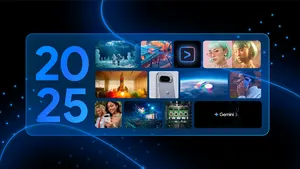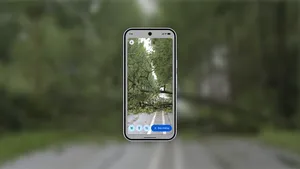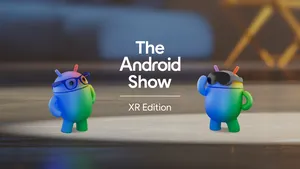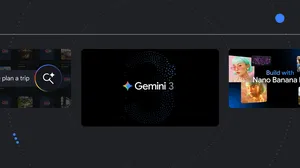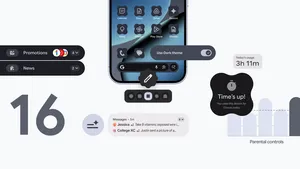10 years ago, Android expanded to 3 new platforms

Ten years ago, Android got a lot bigger. Not just because it crossed over a billion active users, but because in 2014, we extended Android (then primarily available on phones and tablets) to three new platforms: Android Auto for your car, Android TV for your smart TV and Android Wear for your smartwatch. The new platforms introduced Android to hundreds of millions of new devices and brought Google services to more places.
“Our mission since the launch of the first Android device in 2008 has been to work with the industry and build for everyone, everywhere — to provide people with choice,” says Android Ecosystem President Sameer Samat. “And in 2014, we decided to take that to the next level.”
Cars, smartwatches and TVs may sound like three extremely different categories of devices, with such vastly different hardware and form factors that it’s hard to imagine they’d share any software DNA, let alone the same base operating system. But Android’s open platform, developer-friendly design and flexibility made it a great fit for new places.
Android hits the road
In 2010, Google Maps added turn-by-turn navigation, and practically overnight, driving became wildly more efficient.
“Smartphones were not designed to be used in a vehicle by a driver. So we looked at this as an opportunity to create a safer and more seamless connected experience,” says Patrick Brady, Android Auto VP. “We realized we could leverage the computers in everyone’s pockets that had an ecosystem of millions of apps used by over a billion people. So we adapted Android — and its apps — to work in cars.”
Android Auto’s approach was simple: Connect your phone to your car display and you’ll see your Android apps on screen, ready to give you directions, make a hands-free call or play music from your favorite playlists.
Android Auto brought the platform and its apps to cars in a safe and easy-to-use way.

For early prototypes, the team hired experts in driver distraction testing and safety to mitigate driver cognitive load. And they worked closely with automakers to show them the benefit of projecting Android into their vehicles. Android Auto offered more powerful hardware, stellar projection with your phone and apps, and easy system updates — making it a win for both drivers and automakers.
Today, over 200 million vehicles offer Android Auto. “We had a whole bunch of carmakers come to us and say, ‘Hey, Android is great on phones and we love what you've done with Android Auto — how can we take Android and use it as our in-vehicle operating system?’” Patrick says. “Now we also have Android Automotive OS and dozens of car models that run Android natively with Google built-in.”
Showtime for Android
Google was no stranger to TV when Android TV launched in 2014 — the original Chromecast was released a year prior. “We knew some people wanted more options than casting, though,” says Shalini Govil-Pai, Google TV VP. “People wanted to be able to do more when watching TV in their living rooms. They wanted to stream content via apps directly available on their TVs. So why not bring Android — which already runs on billions of phones and has distribution for thousands of apps — to TVs?”
In 2014, we brought Android — which already ran on billions of phones — to the big screen.

Android was already well-suited to working as the brains of a smart TV system; the team had done tons of work making sure it was a great operating system for audio and video playback. But running Android on a TV was very different than on a superpowered phone.
“TVs are more constrained when it comes to processing power and memory — both RAM as well as just storage overall. And no one wants to restart a TV in the middle of a game,” says Shobana Radhakrishnan, Senior Engineering director for Google TV.
To solve that slowdown, the team worked closely with other teams across Google to optimize all layers of the Android stack and find new ways to use memory and storage more efficiently.
Today, Android TV has expanded to 220 million devices worldwide. It’s become what we know as Google TV, which is available on our modern Chromecast hardware and newer TVs, and offers deeper levels of AI-based search and discovery, personalization and recommendations so we can all spend less time searching and more time watching.
An Android (smart)watch party
When work developing a Google smartwatch began, the idea was never to just make a tiny Android phone. “One of our team mantras was and continues to be: ‘We are not building a smartphone for the wrist,’” Brett Lider, UX director for Wear OS, says. Shrinking Android down to a smartwatch was an ambitious — and challenging — task.
“There are a lot of form factor and ergonomic challenges on a smartwatch, where input and output are both constrained,” Brett says. “The amount of information you can convey on a small screen is significantly less than on a phone, and typing or touch input is considerably more difficult.”
In bringing Android to your wrist, the team had to consider the smaller display surface and constraints on typing and touching.

The platform first launched on the LG G Watch and Samsung Gear Live in 2014, and would go on to introduce its take on widgets, called Tiles, to bring the predictability and strengths of the third-party app ecosystem to Android-enabled smartwatches, alongside a rebrand to Wear OS.
In the years since, Wear OS has expanded its reach and relevance with releases like Wear OS 5 and modern hardware like the Pixel Watch and Samsung Galaxy Watch. In 2023 alone, Wear OS grew its user base by 40%, and now has users across 160 countries and regions.
A decade later Android is going strong
In the 10 years since Android expanded to cars, watches and TVs, people can now stay connected with hundreds of millions of Android devices from dozens of device manufacturers that all work seamlessly together and with Google services.
“These launches meant that people weren’t just buying a phone anymore. They were buying a whole ecosystem,” Sameer says. A lot has changed in 10 years, but one thing remains very true, he says: “We want all of your devices — TV, cars, watches and more — to work better together.”

